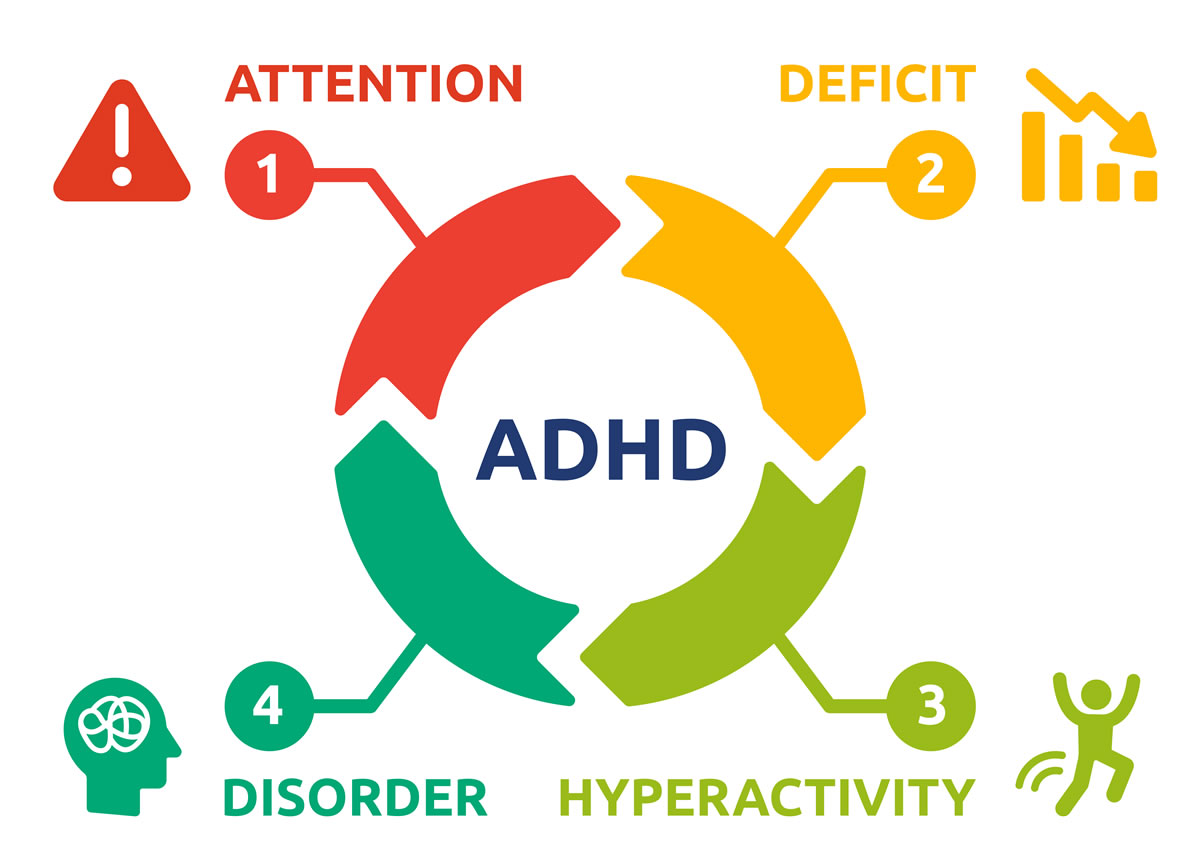
Attention Deficit Hyperactivity Disorder (ADHD) is a common neurobiological disorder that becomes apparent in the preschool or early grades of school. ADHD affects between 5-12% of the population or about one to three students in every classroom. ADHD may be diagnosed by medical or psychology professionals. It is more commonly diagnosed in boys than in girls (3:1), although that does not necessarily mean more boys have ADHD (Centre for ADHD Awareness, Canada, n.d.-a).
The main symptoms of ADHD include:
- Hyperactivity: difficulty regulating one’s activity level – for example, constant movement in chair, getting up and down from chair, climbing, or running around when others are seated; also may manifest as talking so much that others cannot get a turn in.
- Impulsivity: difficulty inhibiting behaviour – for example, acting quickly without thinking.
- Inattention: difficulty attending to the task at hand – for example, frequent daydreaming, being “lost in another world” or easily sidetracked and distractible. Students displaying this symptom tend to be less quickly identified, as inattention is less disruptive.
ADHD is a life-long condition that changes and evolves as a person ages. Adults frequently experience a decrease in the hyperactivity and impulsivity elements, but the inattention persists.
Academic Issues Related to ADHD
For most of its history, ADHD has been seen primarily as a behavioural disorder with secondary impact on learning. However, current neuroscientific evidence suggests that learning problems are an integral feature of ADHD. Specifically, ADHD is associated with weaknesses in executive functioning, working memory, and processing speed – all cognitive abilities important to self-regulation, organization and academic success. A psychoeducational assessment by a psychology professional would look at strengths and weaknesses, including in these cognitive abilities, and could lead to a diagnosis of learning disabilities. ADHD is the most common co-occurring disorder with learning disabilities.
What Helps?
As with LDs, early identification helps to determine appropriate and useful interventions, which are most helpful if started at a young age. While these interventions can include pharmaceutical treatments (medications), they must also include the teaching of academic and social skills, to help deal with the ADHD symptoms and their impact on learning.
Understanding on the part of teachers and parents also plays a major role in helping. Students with ADHD can attract a lot of negative attention , and this can spiral into negative attitudes towards school in the long run. Students with ADHD have a 30 to 40% dropout rate (Centre for ADHD Awareness, Canada, n.d.-b).
Interventions that work:
Active engagement is crucial – silent seatwork does not work well for students with ADHD. Increased opportunities for active responses to learning or work situations, and the allowance for more frequent feedback and interaction will provide more opportunity for success.
Be explicit – students with ADHD can have trouble with the amount of information they can deal with at one time, and with organizing that information. It is important for instructions and explanations to be provided in a clear, orderly manner, in manageable chunks.
Metacognitive strategies – strategies that help students to be aware of how they learn, and to self-regulate their thinking processes are very important. Strategies can include the use of mnemonic devices, self-questioning, goal-setting and planning.
Keep inconsistency in mind – variability and inconsistency in performance are typical of students with ADHD, and should not be interpreted as laziness or defiance.
Helpful Resources
The Hospital for Sick Children has developed the ADHD Resource Centre, which provides an overview of ADHD, as well as information about diagnosis, treatment, and ADHD at school, in post-secondary and in the workplace. Click here to access the website.
The Centre for ADHD Awareness, Canada (CADDAC), offers a wide variety of resources for individuals with ADHD, including a section specific to parents of children with ADHD. Click here to access the website.
The Canadian Attention Deficit Hyperactivity Disorder Resource Alliance (CADDRA) is a Canadian not-for-profit alliance of healthcare professionals who support educators, parents, children, adolescents, and adults. Click here to access the website.
References
Centre for ADHD Awareness, Canada. (n.d.-a) Current Situation in Ontario for Students with ADHD. Retrieved from http://www.caddac.ca/cms/page.php?124
Centre for ADHD Awareness, Canada. (n.d.-b). What is Attention Deficit Hyperactivity Disorder? Retrieved from http://www.caddac.ca/cms/page.php?67
